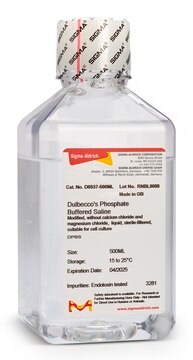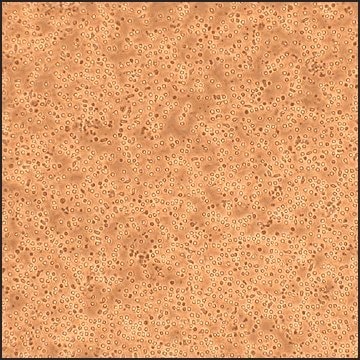This is a product of PromoCell. Please see the instructions for use provided by the manufacturer:
1. Fill Lymphocyte Separation Medium 1077 in a tube. Use 3 ml for a 15 ml tube and 20 ml for a 50 ml tube.
2. Hold the tube at a 45° angle and carefully load the cell suspension to be separated on top of the separation medium.
Note: Perform this step slowly but constantly. Take care that the two phases do not mix and a sharp border is present.
For best results, use an electrical pipet aid with EX-function allowing the slow and constant efflux of the cell suspension from the pipet.
3. Centrifuge the tube at 440 x g for 40 minutes at room temperature without brake.
4. Carefully aspirate most of the supernatant without disturbing the layer of mononuclear cells in the interphase.
5. Aspirate the ring of mononuclear cells from the interphase using a pipet. Keep the volume as small as possible.
6. Wash the mononuclear cells with PBS/0.1% HSA or BSA and centrifuge at 360 x g for 10 minutes.
7. Wash the mononuclear cells with PBS/0.1% HSA or BSA and centrifuge at 200 x g for 10 minutes X 2
8. The mononuclear cell preparation is ready.
C-44010
Lymphozyten-Separationsmedium 1077
500 ml
Synonym(e):
Lymphozytenmedium, Trennmedium für Lymphozyten
Größe auswählen
About This Item
Empfohlene Produkte
Form
aqueous solution
Verpackung
pkg of 500 ml
Methode(n)
cell culture | mammalian: suitable
Versandbedingung
ambient
Lagertemp.
room temp
Allgemeine Beschreibung
Anwendung
Qualität
Lagerung und Haltbarkeit
Subkultur-Routine
Signalwort
Warning
H-Sätze
Gefahreneinstufungen
Eye Irrit. 2 - Met. Corr. 1 - Skin Irrit. 2
Lagerklassenschlüssel
8B - Non-combustible corrosive hazardous materials
WGK
WGK 3
Flammpunkt (°F)
Not applicable
Flammpunkt (°C)
Not applicable
Hier finden Sie alle aktuellen Versionen:
Analysenzertifikate (COA)
It looks like we've run into a problem, but you can still download Certificates of Analysis from our Dokumente section.
Wenn Sie Hilfe benötigen, wenden Sie sich bitte an Kundensupport
Besitzen Sie dieses Produkt bereits?
In der Dokumentenbibliothek finden Sie die Dokumentation zu den Produkten, die Sie kürzlich erworben haben.
Kunden haben sich ebenfalls angesehen
Artikel
Umbilical cord blood and adult peripheral blood mononuclear cells with optimized maintenance medium for short-term cultivation.
-
What's the procedure of lymphocytes separation with this media and the quantity used .
1 answer-
Helpful?
-
-
What percentage of lymphocytes/monocytes, etc. would be expected if they use it on fresh human blood?
1 answer-
When utilizing the Lymphocyte Separation Medium 1077 (cat. #C-44010) on fresh human whole blood, the expected percentage of lymphocytes/monocytes typical for this sample is usually in the range of 70-90% of the enriched PBMCs.
Helpful?
-
Active Filters
Unser Team von Wissenschaftlern verfügt über Erfahrung in allen Forschungsbereichen einschließlich Life Science, Materialwissenschaften, chemischer Synthese, Chromatographie, Analytik und vielen mehr..
Setzen Sie sich mit dem technischen Dienst in Verbindung.














